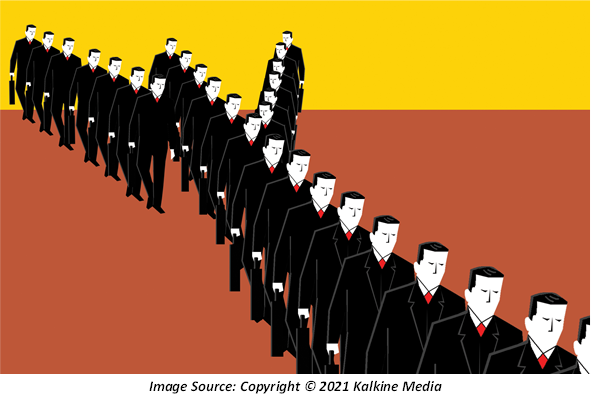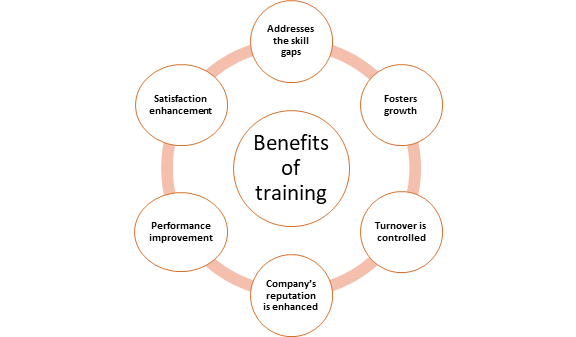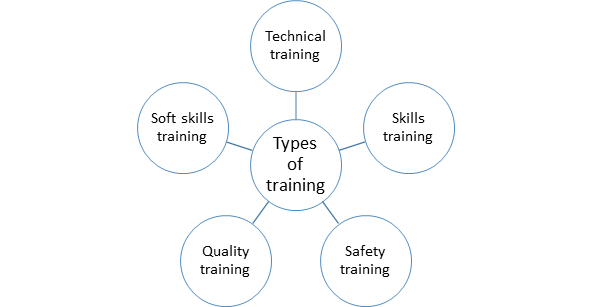What is training?
In human resource development, training is a basic concept which is concerned with skill development and enhances the skills to a particular standard or as per the job requirement. Training is a tool that can uplift the situation and the position of the employees and help the employee in working in other positions in an effective, correct, and conscious manner. Training increases the skills and knowledge of an employee in a particular field.
Training can be chiefly described as an organisational procedure in which people learn skills and enhance their knowledge for a definite purpose. It is primarily conducted to help the employees in applying their new skill set in the job and increase overall organisational productivity.
Summary
- In human resource development, training is a basic concept which is concerned with skill development or enhancing the skills to a particular standard or as per the job requirements.
- Training is a tool that can uplift the situation the position of the employees and help the employee in working in other positions in effective, correct, and conscious manner.
- Training is primarily conducted to help the employees in applying their new skill set in the job and increase overall organisational productivity.
Frequently Asked Questions (FAQs)
What is the objective of training?
The main objectives of job training programmes include –
- Imparting job-related knowledge amongst the employees.
- Communicating skills, organisational policies, rules and other requirements to the employees.
- Enhancing productivity at the individual level as well as team and organisational level.
- To create a safe and sound working environment.
- The injuries or chances of error which occur in a manufacturing industry are reduced.
- The workforce is trained to work for higher positions or accept the changing environment and technological requirements.

What is the need for training?
The training is required in the following situations –
- Environmental change – With the introduction of computerisation, the evolution of new technologies and digital disruptions, employees are required to be trained to use new technology. By enriching the employees with new skills and competencies, organisations can leverage their productivity.
- Organisational complexity – The emerging technologies have added complexities in the operations; therefore, employees need to be trained to handle the rising complexities.
- Human relations – To create a positive environment, an organisation has to maintain good human relations and therefore training is required to deal with the different human problems.
- Job satisfaction and requirements – There can be a gap between the skills required by the organisation and the current skills of the employees. To bridge this gap, employee training is necessary. Moreover, training plays a crucial role in enhancing job satisfaction among the employees.
- Change in job position – The need for training arises when an employee is either transferred to a new location or promoted to a new position. Furthermore, training is necessary when the old employees need to learn new technology or techniques to perform the previous roles.
What are the benefits of training?

Source: Copyright © 2021 Kalkine Media
- Addresses the skill gaps – It is evident that every employee will have some weakness in a particular field or skill. Training gives the employee the opportunity to improve and get a strong hold on their skills. Through training, the individual efficiency and also the team’s efficiency is enhanced.
- Performance improvement – As training converts the weakness into strength, the overall performance of the employees improves. Training equips the employee with knowledge regarding their daily job responsibilities. Moreover, there is a boost in their confidence which improves their daily productivity.
- Satisfaction enhancement – When an organisation makes an effort to train their employees, then the employees feel valued and gain a feeling that they are important to their organisation. Employees also take training as a reward or accomplishment therefore they are satisfied with their roles and career.
- Foster growth – An organisation is set up with the aim to increase the revenue and overall turnover. By training the employees, the organisation creates a workforce which will help the organisation in meeting their long term and short term goals.
- Turnover is controlled – With training, confidence is gained, and employee inculcates a feeling of trust towards the organisation, resulting in a reduction in the turnover rate. Turnover has a cost and time adjoint with it, so with training, the cost and time can be saved significantly.
- The company’s reputation is enhanced – With continuous investment in training and development programmes, the company is able to enhance its reputation and likely to gain access to skilled employees.
What are the types of training?

Source: Copyright © 2021 Kalkine Media
There are many types of training programmes and the types of training used by a company are dependent upon the resources, current skill level of the employees, the company’s size and current area of focus of an organisation.
- Technical training – This training aims at introducing the technological or technical aspect of a job. For instance, an organisation might train the employees on how to use a computer. In an accountancy firm, an employee might be trained on how to do the data entry to perform data recording responsibilities.
- Quality training – The need for quality training generally arises in the production industry. It involves training the employees regarding error detection, prevention and taking corrective actions, to maintain the quality of the end products. The quality products create product differentiation in the market and gain a competitive advantage.
- Skills training – This training involves proficiencies that are required for performing the duties. To illustrate, in a consultancy firm, an employee has to be trained in regard to the art of talking to a customer or knowledge regarding the services being offered by the company.
- Soft skills training – In soft skills training, the personal habit, communication and grace related skills are given to the employees. It is necessary as it affects the relationship with fellow colleagues. For instance, in a restaurant joint, an employee at the cash counter should be equipped with the soft skills as they are in direct contact with the end customers and might impact the business.
- Safety training – Safety training is given to ensure that the employees are not injured at the workplace This training is crucial in the industries which use harmful chemicals or machinery.
 Please wait processing your request...
Please wait processing your request...